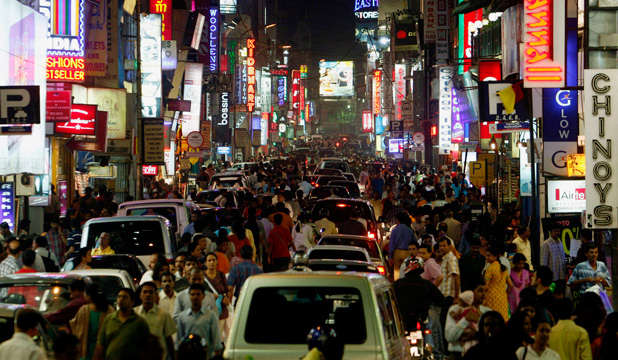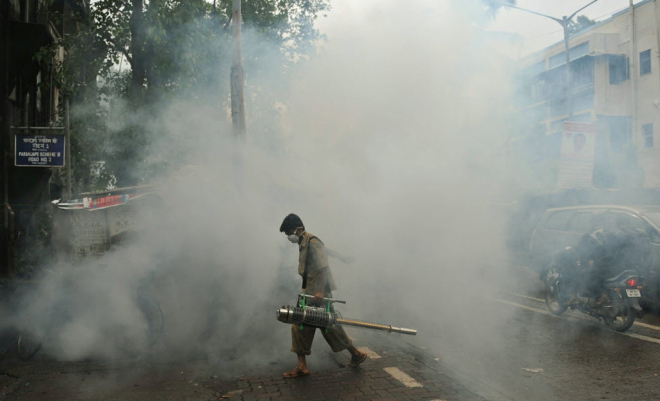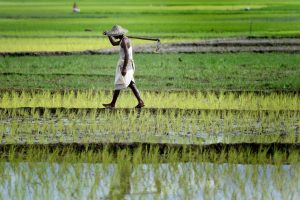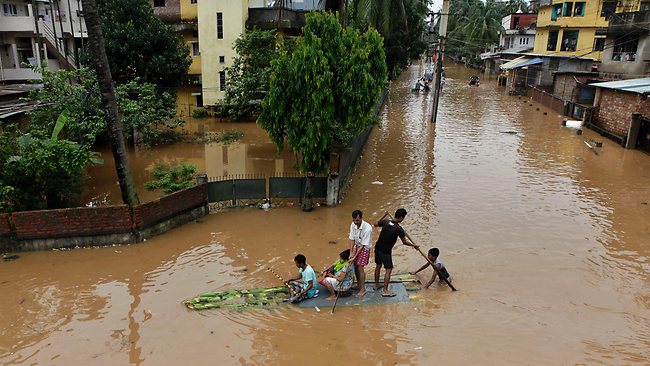By Harland Dahl
India’s monsoon hit the Southern Indian state of Kerala on Friday, June 5th, four days later than expected. With monsoon rains comes relief from India’s stifling heat wave, which began in May.
The Indian Institute of Tropical Meteorology predicts that the monsoon will spread across most of India by the end of June. Rains are expected to reach the country’s West coast by June 17th and central India by June 25th. The India Meteorological Department predicts that the monsoon will be weaker than usual, bringing less than 90% of typical monsoon rainfall.
It is estimated that crop planting in India has gone down by 9% since last year. This is due to weak monsoon rains, which not only lead to low crop production, but to high food prices. The crops most affected are grains and cotton.
In response, the Indian government has taken several steps to boost agricultural production. The India Meteorological Department has begun to send mobile weather alerts to farmers, and public officials have been promoting the cultivation of more drought-resistant crops.
Minister of Agriculture Eknath Khadse explained, “Growing vegetables and fruits would be our priority. This will give farmers something for daily survival, without too much investment, along with the main crops ahead of the kharif season.”
The agricultural sector employs more Indian citizens than any other sector of the economy. This means that a below-average monsoon could have a significant effect on the Indian economy, as a whole. The ICICI Bank of India estimates that weak rains will cause a drop in India’s GDP growth for this fiscal year, from the originally estimated growth rate of 7.8% to 7.3%.
But even during a relatively dry year, monsoon rains have the potential to negatively impact other sectors of the Indian economy, as well. Heavy rains put crucial infrastructure at risk throughout India, and are particularly threatening to burgeoning industrial cities such as Bangalore, home to 30% of India’s startup companies.

With heavy rains come blackouts and losses in internet connectivity. While larger corporations can afford more reliable internet connections, smaller companies often depend on unreliable nationwide internet service providers or local cable networks.
Weakened infrastructure has also lead to sanitation problems in many parts of India, particularly in poorer parts of the country’s largest cities. Although overall water contamination levels have gone down in the past decade, contamination usually rises significantly during monsoon season.
Rising underground water levels during the monsoon season affect outdated underground sewages systems and leaking pipes, leading to abnormally high levels of E Coli and other bacteria. These bacteria cause diarrheal disease and various water-borne illnesses.
Vector-borne diseases such as malaria and dengue are also particularly prominent during monsoon season. To avoid exposure to contaminants, Indians are encouraged by health officials to take precautionary measures such as boiling all drinking water and only eating foods stored inside.

Fumigation efforts are also ramped up during monsoon season, which is also breeding season for mosquitos. Those most affected by both vector and water-borne diseases include children and the elderly, often due to time spent outside or an inability to fend off infection.


Appreciate the post!!!
its was very embarrassing to Indians who lived in that areas
http://www.allianceresearch.in
I think Fumigation efforts are also ramped up during monsoon season, which is also breeding season for mosquitos. Those most affected by both vector and water-borne diseases include children and the elderly, often due to time spent outside or an inability to fend off infection.
The awareness level of people in general has risen. Now more percentage of population know the basic hygiene and even know the government’s immunization plans and how to counter weather borne diseases.